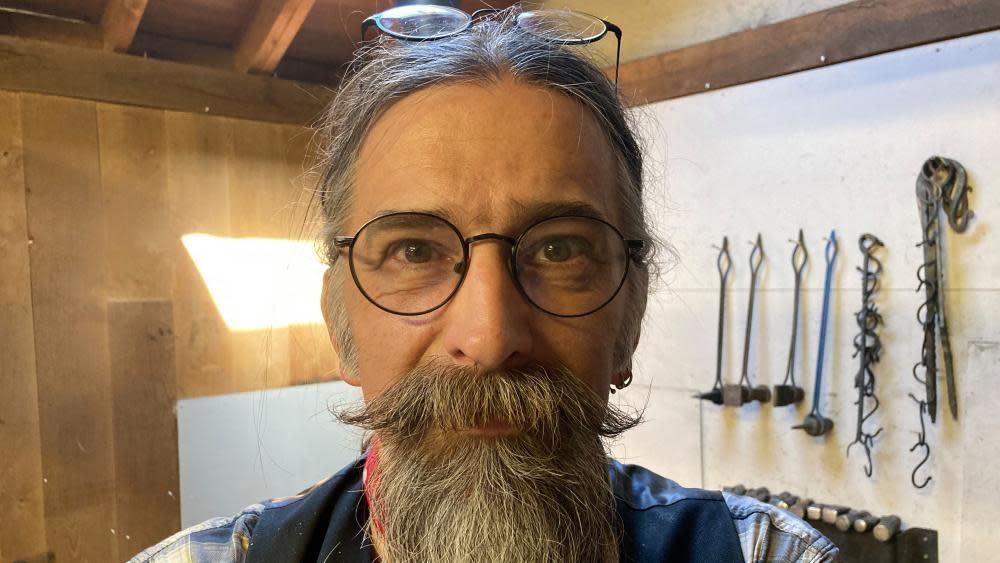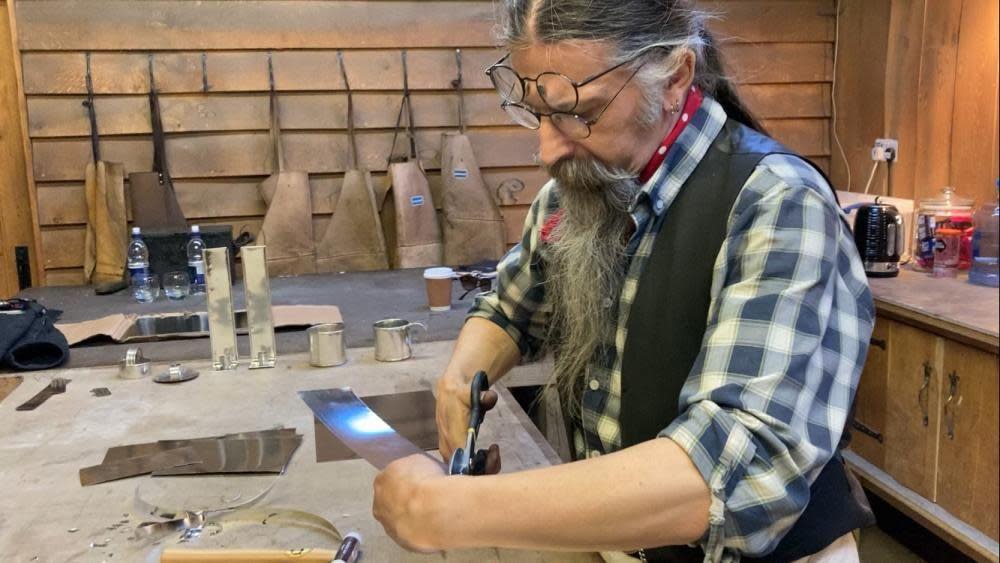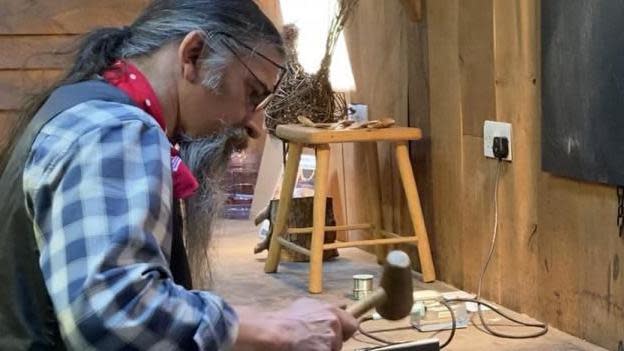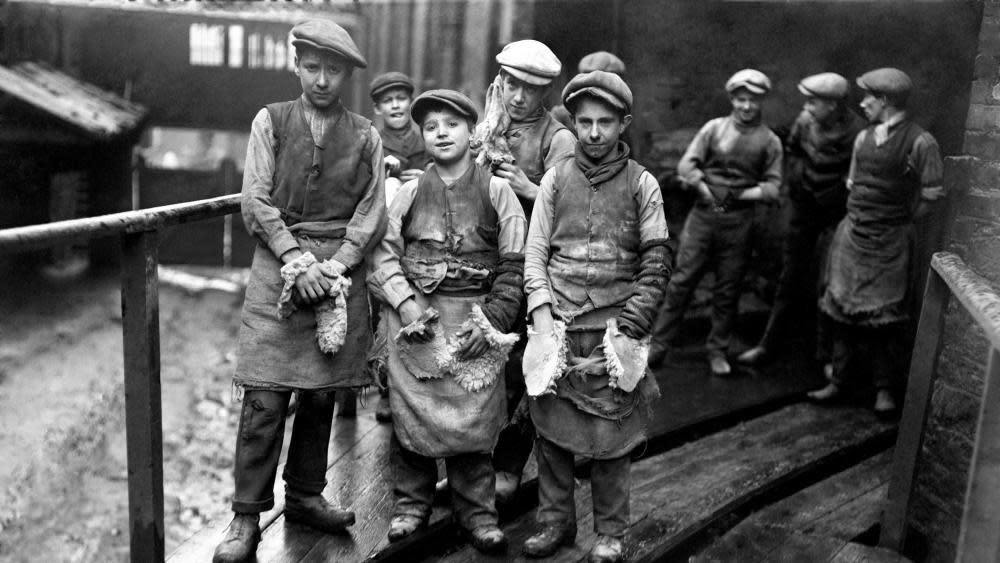'I'm one of five people in the country who are still doing my job'

The bearded man wielding a mallet in a small workshop may not look as though he is going into battle, but John Wills is fighting to keep his craft alive.
The tinsmith, from Stanwick, Northamptonshire, is part of a project designed to bring the profession "back from the dead".
He said there were only five practitioners alive and just three were managing to make a living from the profession.
He mainly makes objects for filming and re-enactment groups.

The craft of turning tin into useful or decorative objects has existed for thousands of years.
Tinware was particularly popular in England in the 17th Century. The material was durable, rustproof and looked like silver but was available at a fraction of the price.
By the second half of the 19th Century there were tinware factories and businesses in most towns and cities.
The craft's decline began in the 1920s, and by the 1950s tin was gradually replaced first by aluminium, then plastics.

The factories are now all closed and the few surviving tinsmiths struggle to keep their businesses profitable.
He said: “Three [are] making a living from it, or trying to.
"We’re on the red list of endangered crafts… almost extinct. I’m part of a project to bring it back from the dead.”

Mr Mills began his career working with copper, rather than tin. It was only when the Heritage Crafts Association launched a project to revive tinsmithing that he decided to have a go.
He makes a variety of objects, including kettles, boxes, pastry cutters, candleholders and lanterns.
Currently his main customers are filmmakers - who he said have previously called without warning and asked for every tin cup he has - and re-enactment groups.
Mr Mills also teaches his art to people who he hopes will make up the next generation of tinsmiths, with some courses being funded by the National Lottery.
He said: "Once these trades are gone, they’re gone forever.
"Because so few people do it, you’re having to go to museums and look at the old pieces. You’re taking them to pieces in your head… where the folds and the joins are… because there are no instruction manuals.”
“[Tinsmithing] is something that we’ve forgotten is part of our cultural heritage.”
Got a story? Email eastofenglandnews@bbc.co.uk or WhatsApp us on 0800 169 1830
